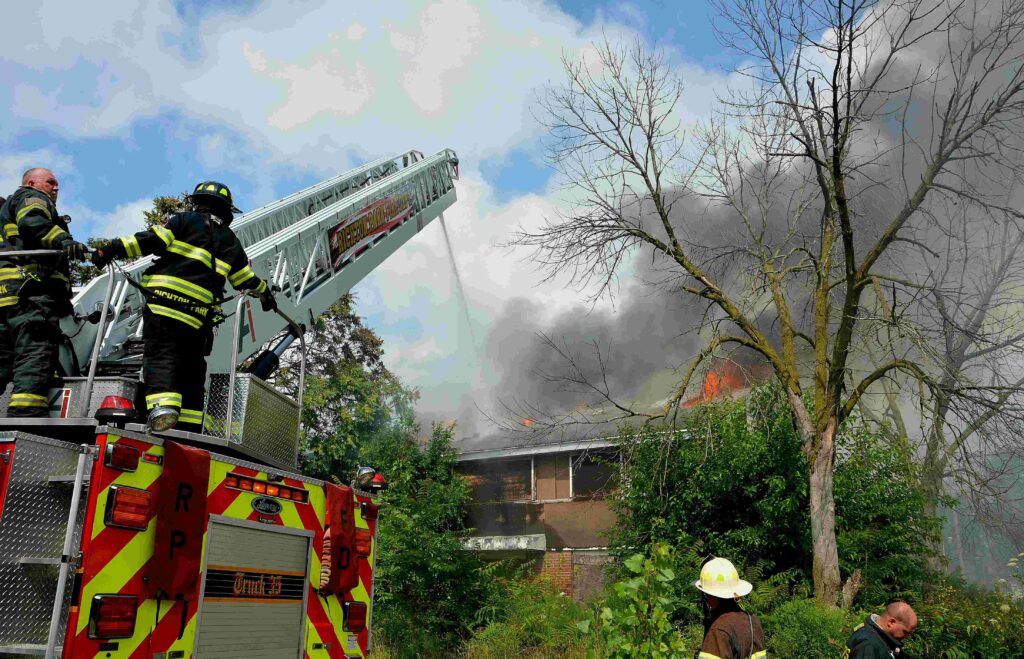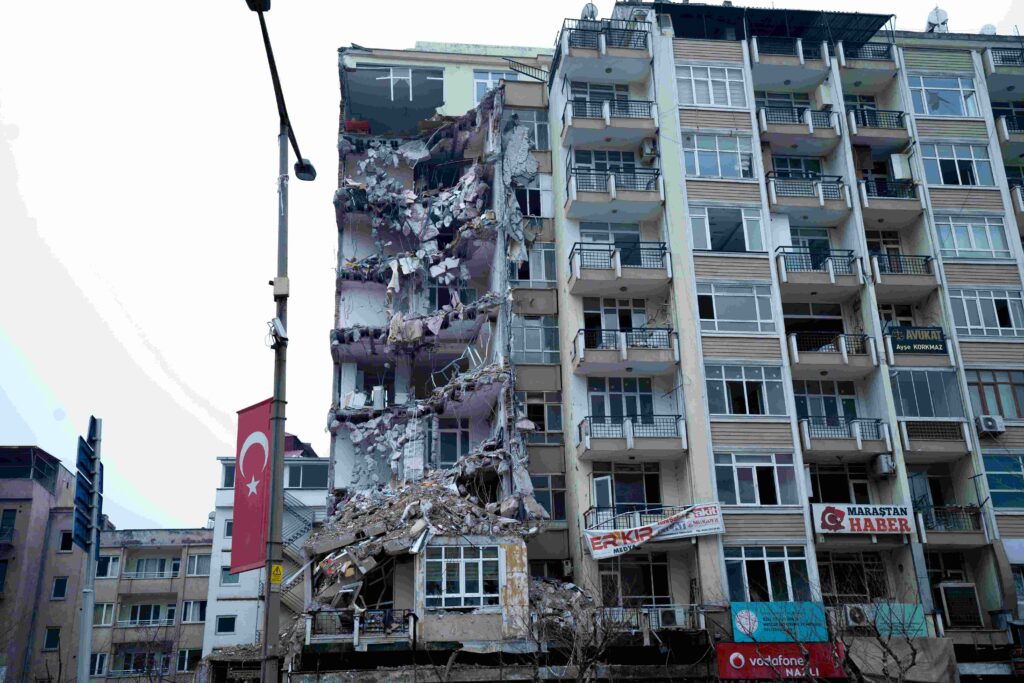Introduction
In recent decades, the world has faced an alarming rise in the frequency and severity of natural and human-made disasters. From devastating earthquakes and tsunamis to wildfires, pandemics, and industrial accidents, disasters disrupt communities, destroy infrastructure, and claim countless lives. According to the United Nations Office for Disaster Risk Reduction (UNDRR), over 4 billion people were affected by natural disasters globally between 2000 and 2023, resulting in trillions of dollars in economic losses.
Traditional disaster management approaches, which rely heavily on human coordination, paper-based systems, and delayed data reporting, often struggle to keep pace with the speed and unpredictability of modern disasters. This gap between the scale of disasters and the capability to respond effectively has created an urgent need for innovation.
Enter Artificial Intelligence (AI).
AI is revolutionizing disaster management by introducing predictive analytics, automation, real-time monitoring, and intelligent decision-making. With AI, agencies can predict disasters before they strike, optimize resource allocation during emergencies, and ensure faster, more effective recovery efforts. This transformation isn’t just changing how we handle disasters — it’s also creating entirely new career paths at the intersection of technology and humanitarian work.
This article explores how AI is shaping the field of disaster management, the career opportunities it presents, and the skills required to thrive in this emerging sector.
Table of Contents

1.2 The Importance of Disaster Management
Disasters, whether natural or human-induced, have far-reaching consequences:
- Loss of life and injury
- Destruction of infrastructure like roads, bridges, and hospitals
- Economic disruption including job losses and reduced productivity
- Psychological impact on affected individuals and communities
- Environmental degradation such as deforestation and pollution
Effective disaster management aims to reduce these impacts through structured planning, preparedness, and rapid response mechanisms.
Historically, disaster management has focused on four primary stages:
- Mitigation – Reducing the likelihood or severity of disasters.
- Preparedness – Ensuring systems and communities are ready for a potential disaster.
- Response – Taking immediate action during and after a disaster to save lives and property.
- Recovery – Restoring communities and infrastructure to pre-disaster conditions.
While these stages remain essential, the integration of AI has enhanced every phase, enabling faster decisions and more accurate strategies.
1.3 Global Challenges Highlighting the Need for AI
In today’s interconnected world, disasters have become more complex and widespread. Some key global challenges include:
- Climate Change: Rising global temperatures are fueling more frequent hurricanes, wildfires, floods, and droughts.
- Urbanization: Increasing population density in cities creates higher vulnerability to large-scale disasters.
- Pandemics: Events like COVID-19 highlight the need for real-time data analysis and resource allocation.
- Economic Disparities: Developing nations often lack access to modern disaster management tools.
- Information Overload: During disasters, vast amounts of unstructured data from social media, satellites, and sensors overwhelm manual processing systems.
AI addresses these challenges by automating data analysis, predicting outcomes, and improving coordination among stakeholders.
1.4 Evolution of Disaster Management Technology
The journey from traditional disaster management to AI-driven systems has been gradual yet profound. Initially, disaster management relied on:
- Paper maps and manual planning.
- Radio communications for coordination.
- Post-event damage assessments conducted days or weeks later.
The introduction of digital technology brought improvements such as:
- Geographic Information Systems (GIS) for mapping disaster-prone areas.
- Mobile apps for reporting emergencies.
- Basic predictive models based on historical data.
However, these technologies had limitations. They lacked real-time adaptability and struggled with massive datasets.
AI changed the game by:
- Enabling real-time data processing from diverse sources.
- Providing accurate predictive analytics for proactive measures.
- Automating search and rescue through drones and robotics.
- Facilitating communication through AI-driven chatbots and translation tools.
1.5 Why AI is Essential for the Future of Disaster Management
Here’s why AI is indispensable in today’s disaster management landscape:
- Speed:
AI processes data in seconds, giving authorities actionable insights without delays. - Accuracy:
Machine learning algorithms can identify patterns that humans might miss, reducing errors in prediction and response. - Scalability:
AI systems handle vast datasets, including satellite imagery, IoT sensor feeds, and social media activity. - Cost Efficiency:
By optimizing resource allocation, AI reduces wasteful spending and ensures help reaches those who need it most. - Accessibility:
AI-powered chatbots and translation tools make disaster information available in multiple languages and formats.
The Role of AI in Disaster Management
2.1 Why AI is a Game-Changer for Disaster Management
Artificial Intelligence has evolved from a futuristic concept into a practical tool that governments, organizations, and humanitarian agencies now rely on. The key difference between traditional disaster management and AI-driven systems lies in data utilization and decision-making speed.
During a disaster, millions of data points are generated every second—from weather sensors, social media platforms, drones, satellites, emergency calls, and more. Humans alone cannot process this information fast enough to make timely decisions. AI steps in by analyzing massive datasets instantly, identifying patterns, and recommending or even automating critical actions.
Example:
During Hurricane Harvey in 2017, over 20 million tweets were posted within five days. Emergency teams couldn’t manually sift through this data to find relevant information. AI-powered Natural Language Processing (NLP) tools were deployed to filter and categorize tweets, pinpointing areas in urgent need of rescue.
Here’s how AI directly transforms each stage of disaster management:
- Before a disaster: AI predicts risk zones and alerts communities in advance.
- During a disaster: AI optimizes response logistics and assists with search and rescue operations.
- After a disaster: AI aids in damage assessment, rebuilding strategies, and mental health support.
2.2 Core AI Technologies Driving Disaster Management
AI is not a single technology but a combination of powerful tools. Each plays a unique role in improving how disasters are managed.
1. Machine Learning (ML)
Machine Learning enables systems to learn from historical data and improve predictions over time.
- Applications:
- Predicting floods, earthquakes, and hurricanes.
- Identifying vulnerable populations at risk.
- Estimating disaster impact using historical patterns.
- Example:
IBM’s ML-based platform predicts wildfire spread patterns, helping firefighters plan containment strategies more effectively.
2. Deep Learning
Deep Learning, a subset of ML, uses neural networks to analyze complex datasets like satellite images or drone footage.
- Applications:
- Detecting collapsed buildings using drone imagery.
- Identifying damaged roads for emergency vehicle routing.
- Classifying disaster zones by severity.
- Example:
NASA uses deep learning to analyze satellite imagery for detecting flood zones within hours instead of days.
3. Natural Language Processing (NLP)
NLP enables AI to understand and interpret human language, which is crucial during disasters when information flows rapidly across different platforms.
- Applications:
- Analyzing social media posts to identify affected areas.
- Translating emergency messages into multiple languages.
- Deploying chatbots to provide real-time disaster updates.
- Example:
The American Red Cross uses NLP-powered chatbots to answer thousands of queries simultaneously during hurricanes and wildfires.
4. Computer Vision
Computer Vision allows AI systems to interpret visual data from cameras, drones, and satellites.
- Applications:
- Assessing infrastructure damage.
- Detecting stranded individuals in disaster zones.
- Monitoring wildfire spread through infrared imaging.
- Example:
After the 2023 Turkey-Syria earthquake, AI-powered drones scanned affected areas, identifying over 1,000 critical rescue locations within the first 24 hours.
5. Robotics and Drones
AI-powered robots and drones play a critical role in situations where it’s unsafe for humans to operate.
- Applications:
- Search and rescue in collapsed buildings or hazardous zones.
- Delivering medical supplies to inaccessible areas.
- Real-time disaster site mapping.
- Example:
During the Nepal earthquake, drones equipped with AI-guided mapping systems provided 3D maps of affected villages within hours.
6. Internet of Things (IoT) and AI
IoT involves a network of sensors and devices that collect environmental data. When combined with AI, this data becomes actionable intelligence.
- Applications:
- Early warning systems for tsunamis and earthquakes.
- Monitoring water levels to prevent dam failures.
- Tracking population movements during evacuations.
- Example:
Japan’s earthquake early warning system uses IoT sensors linked to AI algorithms to issue alerts within seconds of seismic activity.
7. Predictive Analytics
Predictive analytics combines statistical models with AI to forecast outcomes and plan for different scenarios.
- Applications:
- Predicting the spread of wildfires or pandemics.
- Optimizing supply chain routes for relief distribution.
- Forecasting long-term climate risks.
- Example:
The UN uses predictive analytics to anticipate refugee migration patterns after disasters, ensuring resources are ready in advance.

2.3 AI in Action: Mapping Technologies to Applications
Below is a detailed table showing how different AI technologies are used at various stages of disaster management, along with specific real-world examples.
| AI Technology | Primary Application | Example Use Case | Stage of Disaster Management |
|---|---|---|---|
| Machine Learning (ML) | Predicting disaster risks based on historical data | Flood forecasting in Bangladesh | Mitigation, Preparedness |
| Deep Learning | Image-based damage detection | Identifying collapsed structures after earthquakes | Response, Recovery |
| Natural Language Processing (NLP) | Analyzing emergency calls and social media data | Filtering Twitter posts for rescue priorities | Response |
| Computer Vision | Visual recognition of disaster impact | Detecting wildfire spread using drone imagery | Mitigation, Response |
| Robotics + AI Drones | Search, rescue, and supply delivery | Delivering medicines to flood-hit areas | Response |
| IoT + AI Integration | Real-time monitoring and early warning systems | Tsunami alerts via coastal sensors | Preparedness, Mitigation |
| Predictive Analytics | Forecasting disaster scale and resource needs | Optimizing relief package allocation | Preparedness, Recovery |
2.4 Benefits of AI Integration in Disaster Management
AI offers numerous advantages that go beyond speed and accuracy. These benefits make it a critical tool for governments and organizations worldwide.
1. Early Prediction and Warning
AI systems can analyze environmental data to predict disasters weeks or even months in advance.
- Example: Google’s AI-powered flood forecasting project provides real-time alerts to millions of people in India and Bangladesh.
2. Real-Time Situational Awareness
AI processes live data from drones, satellites, and sensors, offering up-to-the-minute updates on disaster conditions.
- Example: AI dashboards help emergency operations centers track wildfire spread in California in real time.
3. Optimized Resource Allocation
AI helps prioritize which areas need urgent attention, ensuring equitable and efficient distribution of resources.
- Example: During the COVID-19 pandemic, AI predicted oxygen shortages, allowing authorities to redirect supplies strategically.
4. Cost Reduction
By reducing delays and optimizing logistics, AI saves millions in disaster response costs.
- Example: The U.S. Federal Emergency Management Agency (FEMA) reported a 20% cost reduction in certain relief operations due to AI-driven logistics.
5. Improved Communication
AI-driven chatbots and translation tools help bridge language barriers, ensuring timely communication with affected communities.
- Example: Multilingual AI bots used in Southeast Asia during typhoons improved information reach by 60%.
2.5 Real-World Case Studies
Case Study 1: Google’s Flood Forecasting in India and Bangladesh
- Challenge: Floods in South Asia affect millions annually, with limited warning systems in rural areas.
- Solution: Google developed an AI-powered flood forecasting system using satellite data and ML models.
- Impact:
- Early warnings now reach over 360 million people.
- Forecast accuracy improved by 20% compared to traditional methods.
Case Study 2: IBM Watson for Hurricane Relief
- Challenge: Coordinating relief during hurricanes is complex due to scattered, unstructured data.
- Solution: IBM Watson analyzed social media and news reports in real time.
- Impact:
- Reduced response time by 30%.
- Improved decision-making for rescue and supply distribution.
Case Study 3: AI in Wildfire Management – California
- Challenge: Wildfires spread unpredictably and rapidly, threatening lives and ecosystems.
- Solution: AI-powered drones and predictive analytics modeled fire spread patterns.
- Impact:
- Enabled firefighters to contain fires 25% faster.
- Saved millions in damages by early intervention.
2.6 Limitations and Current Challenges
While AI has immense potential, several limitations must be addressed:
- Data Quality Issues: Inaccurate or incomplete data can lead to flawed predictions.
- Infrastructure Gaps: Developing countries may lack the technology needed for AI implementation.
- Algorithm Bias: AI may unintentionally prioritize certain communities over others.
- Cost of Deployment: Building AI systems requires significant financial investment.
- Cybersecurity Risks: AI-driven systems must be protected against hacking and data breaches.
AI Across Disaster Management Phases
AI is transforming every stage of disaster management by introducing predictive power, automation, and intelligent decision-making. Traditionally, these four stages—Mitigation, Preparedness, Response, and Recovery—relied heavily on manual systems and reactive strategies. With AI, disaster management becomes proactive and data-driven, leading to more efficient operations and, ultimately, more lives saved.
Below is a deep dive into how AI plays a critical role in each phase.
3.1 AI in Mitigation
Mitigation focuses on reducing the likelihood or severity of a disaster before it occurs. The goal is to understand risks, analyze vulnerabilities, and take preventive action to minimize damage.
AI brings unprecedented power to this phase by analyzing massive datasets such as historical weather records, environmental patterns, population density, and infrastructure data.
3.1.1 Key Applications of AI in Mitigation
1. Risk Identification and Prediction
- AI models assess long-term environmental patterns to forecast potential disasters.
- Governments can identify high-risk areas, such as flood-prone regions or earthquake zones.
- Example:
Google AI partnered with India’s Central Water Commission to create a flood forecasting model, providing early warnings to millions in rural areas.
2. Urban Planning for Disaster Resilience
- AI analyzes satellite images and construction data to guide smart city planning.
- Helps in identifying unsafe building clusters and recommending structural improvements.
- Example:
Japan uses AI to evaluate earthquake risk and ensure urban development follows strict safety codes.
3. Climate Change Analysis
- Machine learning tools predict how climate change impacts disaster frequency.
- Assists policymakers in implementing preventive strategies like afforestation and coastal protection.
- Example:
AI-driven climate models in Australia are used to predict bushfire seasons years in advance.
3.1.2 Benefits of AI in Mitigation
- Cost savings by preventing disasters instead of responding afterward.
- Better planning and land use through AI-powered mapping tools.
- Reduced vulnerability by identifying at-risk populations.
Stat Insight:
The World Bank estimates that $1 spent on disaster prevention saves $7 in disaster recovery costs.
AI amplifies this benefit by providing precise and data-driven mitigation strategies.

3.2 AI in Preparedness
Preparedness ensures that communities, organizations, and governments are ready to respond effectively when disasters occur. AI enhances this stage by simulating scenarios, predicting needs, and improving training.
3.2.1 Key Applications of AI in Preparedness
1. Early Warning Systems
- AI processes real-time data from satellites and IoT sensors to generate instant alerts.
- Early warnings help communities evacuate before a disaster strikes.
- Example:
Japan’s AI-powered earthquake warning system provides alerts within 10 seconds of detection, saving countless lives.
2. Predictive Logistics
- AI predicts which resources (food, water, medical supplies) will be required and optimizes supply chains.
- Reduces waste and ensures that resources are available where they are needed most.
- Example:
During COVID-19, AI algorithms helped governments predict oxygen demand spikes and redirect supplies accordingly.
3. Training and Simulation
- AI-powered Virtual Reality (VR) and Augmented Reality (AR) tools simulate disaster scenarios for emergency responders.
- Helps first responders practice in safe, controlled environments.
- Example:
The U.S. military uses AI-driven simulations to train teams for mass casualty events.
4. Public Education and Awareness
- AI chatbots provide communities with guidance on evacuation routes, shelter locations, and emergency contacts.
- Information is personalized and available in multiple languages, improving accessibility.
- Example:
In Southeast Asia, multilingual AI bots have improved public awareness by 60% during typhoons.
3.2.2 Benefits of AI in Preparedness
- Reduced response time through better planning and early alerts.
- Efficient allocation of resources, preventing shortages during disasters.
- Increased community readiness, reducing panic and confusion.
Case Highlight:
In Bangladesh, AI-based flood alerts have reduced flood-related deaths by 25% over five years, demonstrating the life-saving potential of preparedness powered by AI.
3.3 AI in Response
The response phase begins immediately after a disaster strikes and focuses on saving lives, providing relief, and restoring basic services.
This stage demands rapid, accurate, and coordinated action, and AI is proving to be a vital tool.
3.3.1 Key Applications of AI in Response
1. Search and Rescue Operations
- AI-powered drones and robots locate survivors trapped under rubble or in hazardous areas.
- Computer vision systems detect human movements or heat signatures from infrared cameras.
- Example:
After the 2023 Turkey-Syria earthquake, AI drones identified over 1,000 rescue locations within 24 hours.
2. Real-Time Communication
- AI chatbots handle emergency calls, filtering critical information from noise.
- Natural Language Processing (NLP) tools translate messages instantly, bridging language gaps.
- Example:
The American Red Cross uses NLP chatbots to manage thousands of queries simultaneously during hurricanes.
3. Traffic and Route Optimization
- AI maps safe and efficient routes for ambulances and relief vehicles.
- Prevents congestion and ensures timely delivery of aid.
- Example:
Google Maps integrated with AI was used in California wildfires to guide fire trucks around blocked roads.
4. Drone-Based Assessments
- AI-enabled drones map disaster zones in real-time.
- Provides visual insights for decision-makers without endangering human lives.
- Example:
In Nepal, drones provided 3D terrain maps after earthquakes, helping plan relief logistics.
5. Resource Prioritization
- AI systems analyze live data to prioritize who needs help first.
- Ensures vulnerable groups like children and elderly receive timely aid.
- Example:
During Hurricane Harvey, AI tools categorized social media distress calls by urgency.
3.3.2 Case Study – AI in Hurricane Response
During Hurricane Florence (2018) in the U.S., AI-powered predictive models were used to:
- Forecast flood levels.
- Guide evacuation plans.
- Optimize food and medical supply chains.
Impact:
- Reduced evacuation times by 30%.
- Increased supply chain efficiency by 25%, ensuring quicker delivery of aid.
3.4 AI in Recovery
The recovery phase is often long and complex, involving rebuilding infrastructure, restoring livelihoods, and addressing psychological impacts.
AI supports recovery by providing strategic planning and long-term solutions.
3.4.1 Key Applications of AI in Recovery
1. Infrastructure Assessment
- Computer vision analyzes drone and satellite images to assess structural damage.
- Prioritizes rebuilding efforts based on severity.
- Example:
After Hurricane Maria, AI assessed damage to over 100,000 buildings in Puerto Rico within days.
2. Financial Aid Distribution
- AI systems ensure equitable and transparent distribution of aid funds.
- Helps track fraud and prevent misuse.
- Example:
Blockchain + AI integration used in Africa to distribute disaster relief funds securely.
3. Mental Health Support
- AI chatbots provide 24/7 mental health counseling for disaster survivors.
- Helps people access resources without stigma.
- Example:
In Japan, AI-powered mental health bots supported survivors after tsunamis.
4. Analyzing Long-Term Community Needs
- Predictive analytics identify future vulnerabilities.
- Guides governments in building resilient communities.
- Example:
AI-driven models forecasted future housing needs in Haiti after the 2010 earthquake.
3.4.2 Benefits of AI in Recovery
- Faster damage assessments, reducing delays in rebuilding.
- Transparent use of relief funds.
- Improved mental health outreach.
- Data-driven planning for long-term resilience.
3.5 Summary of AI Across All Phases
| Disaster Phase | Traditional Challenge | AI Solution | Real-World Example |
|---|---|---|---|
| Mitigation | Lack of predictive tools | AI-based risk mapping | Google Flood Forecasting |
| Preparedness | Poor planning and training | Predictive logistics and VR simulations | Japan earthquake alerts |
| Response | Slow search and rescue, poor coordination | AI drones and NLP chatbots | Turkey earthquake drones |
| Recovery | Manual damage assessments and fraud | Computer vision + blockchain aid distribution | Puerto Rico rebuilding |
3.6 Key Takeaways
- AI enables proactive disaster management instead of reactive measures.
- Each phase benefits uniquely:
- Mitigation: Risk prediction and prevention.
- Preparedness: Strategic planning and simulations.
- Response: Speed, coordination, and real-time decisions.
- Recovery: Sustainable rebuilding and transparency.
- Countries adopting AI in all four phases see significant reductions in loss of life and economic damage.
Career Opportunities in AI-Powered Disaster Management
The integration of Artificial Intelligence into disaster management has opened up diverse, high-demand career paths. As governments, NGOs, private companies, and international agencies adopt AI to strengthen disaster response and resilience, there’s a growing need for skilled professionals who can design, manage, and implement these systems.
The global market for AI in disaster management is projected to grow to $12.9 billion by 2032, creating thousands of specialized roles.
This presents a unique opportunity for students, job seekers, and professionals to enter a rapidly expanding field that combines technology, social impact, and public safety.
4.1 Why AI Careers in Disaster Management Are Booming
Several factors are driving this surge in AI-related disaster management roles:
1. Rising Climate Disasters
- Increased frequency of floods, wildfires, hurricanes, and heatwaves globally.
- Governments are investing heavily in AI-based early warning systems.
- Example: The UN recently allocated $1.2 billion for AI disaster technology programs.
2. Government Mandates and Global Policies
- Many countries now require AI-driven disaster preparedness strategies.
- India’s NDMA and Japan’s JMA actively recruit AI professionals for public safety roles.
3. Technological Innovation
- Rapid growth of IoT, satellite imagery, drones, and machine learning creates new job categories.
- Startups are emerging in niche areas like predictive flood mapping and AI-powered relief logistics.
4. Multisector Demand
- Careers aren’t limited to government organizations.
- Opportunities exist in:
- NGOs like Red Cross, UNICEF, Doctors Without Borders.
- Private tech firms like Microsoft, IBM, Google AI.
- International agencies like UNDP and WHO.

4.2 Skills Required for AI Disaster Management Careers
Professionals in this field need a combination of technical, analytical, and soft skills.
4.2.1 Technical Skills
| Skill Area | Why It’s Important | Tools / Technologies |
|---|---|---|
| Machine Learning (ML) | Predictive modeling for disaster forecasting | Python, TensorFlow, PyTorch |
| Data Analytics | Real-time decision-making from disaster data | Tableau, Power BI, Pandas |
| Computer Vision | Analyzing drone and satellite imagery | OpenCV, YOLO, AWS Rekognition |
| Cloud Computing | Hosting scalable AI models | AWS, Azure, Google Cloud |
| IoT Integration | Connecting sensors for monitoring | Arduino, Raspberry Pi, MQTT |
4.2.2 Soft Skills
- Crisis Communication: Effectively relaying critical updates.
- Collaboration: Working with multi-agency teams under pressure.
- Adaptability: Responding to unpredictable disaster scenarios.
- Problem-Solving: Designing innovative solutions under tight deadlines.
4.3 Career Paths and Job Roles
AI-driven disaster management offers careers in government, private sector, NGOs, and international organizations.
Here’s a comprehensive table outlining job roles, average salaries, and required qualifications:
| Job Role | Primary Responsibilities | Average Salary (INR/year) | Educational Background | Where You Can Work |
|---|---|---|---|---|
| Disaster Data Scientist | Build predictive models for disaster forecasting using ML and big data. | ₹8–18 LPA | B.Tech/M.Tech in CS, AI, Data Science | Government agencies, NGOs, tech firms |
| AI Disaster Analyst | Analyze real-time disaster data to guide decision-making. | ₹6–15 LPA | B.Sc/B.Tech in Data Analytics, CS | Red Cross, WHO, private companies |
| Geospatial AI Specialist | Use AI for mapping disaster zones and risk areas. | ₹7–16 LPA | Geography + AI certification | NASA, NDMA, space agencies |
| Disaster Robotics Engineer | Develop drones and robots for rescue missions. | ₹9–20 LPA | B.Tech Robotics, AI specialization | Defense, rescue teams |
| IoT Disaster Systems Engineer | Integrate sensors and IoT for monitoring early warnings. | ₹6–14 LPA | Electronics/IoT engineering | Government, research labs |
| AI Ethics Officer (Disaster Tech) | Ensure ethical use of AI in crisis situations. | ₹8–12 LPA | Law + AI specialization | UN, humanitarian NGOs |
| Relief Logistics AI Specialist | Optimize supply chains using AI models. | ₹7–15 LPA | MBA + AI/Analytics certification | WHO, UNDP, private firms |
| AI Policy Advisor | Shape policies for AI-driven disaster response strategies. | ₹10–22 LPA | Public Policy, Data Science | Government think tanks |
| AI Training Coordinator | Train emergency staff to use AI tools effectively. | ₹5–12 LPA | Any degree + AI certification | Red Cross, fire departments |
| AI-based Emergency App Developer | Build apps for real-time disaster alerts and reporting. | ₹7–16 LPA | B.Tech Software Development | Startups, government apps |
4.4 Career Growth Roadmap
If you’re starting out, here’s a step-by-step career roadmap to enter this field:
Step 1: Education Foundation (0–2 Years)
- Bachelor’s degree in Computer Science, AI, Data Science, or Disaster Management.
- Gain basic knowledge of AI tools, Python, and cloud platforms.
Step 2: Specialization (2–4 Years)
- Take certifications in Machine Learning, Computer Vision, or Geospatial Analytics.
- Popular certifications:
- Google Professional Machine Learning Engineer
- AWS Certified Machine Learning
- ESRI GIS Certification
Step 3: Entry-Level Job or Internship (2–4 Years)
- Apply for roles such as Disaster Data Analyst, Junior AI Engineer, or Relief Tech Coordinator.
- Join government disaster agencies or NGOs for hands-on experience.
Step 4: Build a Strong Portfolio (4–6 Years)
- Work on real-life disaster AI projects, such as:
- Flood prediction models.
- AI-powered drone rescue simulations.
- Mobile disaster reporting apps.
Step 5: Advance to Senior Roles (6+ Years)
- Transition into leadership roles like:
- AI Disaster Management Architect
- Disaster Response Technology Director
- AI Policy Strategist
4.5 Top Recruiters and Hiring Sectors
Here are the organizations actively hiring AI disaster management professionals:
| Sector | Examples of Employers |
|---|---|
| Government Agencies | NDMA (India), FEMA (USA), JMA (Japan) |
| International NGOs | Red Cross, UNICEF, WHO |
| Tech Giants | Microsoft AI for Earth, Google AI, IBM Disaster Response |
| Startups | One Concern, Cloud to Street, BanQu |
| Research Institutions | NASA, ISRO, NOAA, WMO |
4.6 Future Outlook of Careers
The field of AI disaster management is still relatively new, which means high growth potential over the next decade.
| Future Trend | Impact on Careers |
|---|---|
| AI + Blockchain | Transparent aid distribution roles will grow rapidly. |
| AI-Powered Drones | Increased demand for robotics engineers. |
| Digital Twin Technology | Simulation specialists will be in high demand. |
| Global Collaboration Platforms | More cross-border policy and strategy roles. |
4.7 Tips to Succeed in This Career Path
- Start Small, Think Big: Build small AI models like flood predictors to show initiative.
- Stay Updated: Follow journals like AI & Disaster Science Review.
- Network Widely: Join LinkedIn groups focused on disaster tech.
- Volunteer: Work with NGOs to gain real-world field experience.
- Build a Portfolio: Showcase projects on GitHub and Kaggle.
4.8 Career Roadmap Summary Table
| Stage | Actions to Take | Expected Outcome |
|---|---|---|
| Beginner (0–2 yrs) | Learn Python, ML basics, disaster science concepts. | Eligibility for internships. |
| Intermediate (2–4 yrs) | Earn AI certifications, join hackathons. | Entry-level job opportunities. |
| Advanced (4–6 yrs) | Lead AI projects, publish research. | Transition to mid-level positions. |
| Expert (6+ yrs) | Develop policies, lead global projects. | Senior leadership roles. |
4.9 Closing Thoughts on Careers
The beauty of this field lies in its dual impact:
- Personal Growth: Working with cutting-edge technology like AI and robotics.
- Social Impact: Making a tangible difference in saving lives and rebuilding communities.
With the right skills, certifications, and experience, you can carve out a rewarding career while contributing to global resilience in the face of natural and man-made disasters.
Key Insight:
Professionals who combine technical AI expertise with humanitarian knowledge will be the most sought-after in the next decade.
Challenges, Ethical Concerns, and Future Trends in AI-Driven Disaster Management
While AI has immense potential to revolutionize disaster management, it comes with its own set of challenges and ethical dilemmas. Understanding these issues is crucial for governments, organizations, and professionals entering this field. Addressing them proactively ensures that AI technologies are responsible, reliable, and fair.
5.1 Major Challenges in AI-Powered Disaster Management
1. Data Quality and Availability
AI systems depend on accurate and timely data to function effectively.
However, during disasters:
- Data may be incomplete due to damaged infrastructure.
- Information may arrive too late for meaningful intervention.
- Misinformation can spread rapidly through social media.
Example:
During the 2020 COVID-19 pandemic, several AI prediction models failed early on because the data on infections and deaths was inconsistent across countries.
2. Lack of Skilled Workforce
AI-driven disaster management is a new and specialized field, and there’s a shortage of:
- AI engineers familiar with emergency systems.
- Disaster management experts with technical knowledge.
- Policy makers who understand AI’s implications.
Insight: This shortage creates tremendous career opportunities but also slows implementation efforts globally.
3. High Implementation Costs
Building robust AI systems requires:
- High-end infrastructure like cloud servers and IoT networks.
- Investment in training, cybersecurity, and maintenance.
- Continuous upgrades to handle new threats.
This makes it challenging for developing nations and small NGOs to adopt AI fully.
4. Cybersecurity Threats
AI systems are digital by nature, making them vulnerable to cyberattacks:
- Hackers could manipulate early warning systems.
- Ransomware attacks could cripple relief coordination platforms.
- Fake disaster alerts could create chaos and panic.
Example:
In 2018, a cyberattack targeted a U.S. emergency alert system, raising concerns about the security of digital disaster response tools.
5. Integration with Legacy Systems
Many government agencies still use outdated legacy systems, making integration difficult:
- Data silos prevent seamless information sharing.
- Manual reporting slows down automated AI workflows.
- Compatibility issues arise between old and new technologies.
6. Bias and Inequity in AI Models
AI algorithms may inadvertently reflect biases in their training data:
- Certain regions may receive priority over others.
- Marginalized communities could be underserved during aid distribution.
- Language barriers may prevent equitable communication.
Example:
If an AI model is trained primarily on English-language data, it may fail to accurately predict needs in non-English-speaking areas.
5.2 Ethical Considerations
1. Privacy and Data Protection
AI relies on sensitive data such as:
- GPS locations of individuals.
- Medical records.
- Financial and property data.
Ethical dilemma:
Balancing life-saving innovation with data privacy rights.
Governments must enforce strict data protection laws like GDPR to safeguard personal information during disasters.
2. Transparency and Accountability
Stakeholders must clearly understand:
- How AI makes decisions during disaster scenarios.
- Who is responsible if AI predictions fail.
Solution:
Adopt explainable AI (XAI) frameworks so that emergency responders can interpret algorithm outputs and trust the technology.
3. Informed Consent
Communities affected by disasters should have the right to know:
- How their data is collected and used.
- What AI systems are involved in relief processes.
Example:
During a flood crisis, residents should be informed if drones are being used to collect imagery of their homes.
4. Human Oversight
AI should support, not replace, human decision-makers.
- Final decisions about evacuation, aid distribution, and rescue must involve human judgment.
- AI is a tool, not a substitute for human empathy and experience.
5.3 Future Trends in AI and Disaster Management
The next decade will witness groundbreaking advancements in how AI is applied to disaster management. These innovations will create new job opportunities and strategic approaches.
| Emerging Trend | Description | Career Impact |
|---|---|---|
| Digital Twins | Virtual replicas of cities used to simulate disaster scenarios. | Demand for simulation engineers and urban AI planners. |
| AI-Powered Autonomous Drones | Fully automated rescue drones with thermal imaging and advanced navigation. | Growth in robotics engineering roles. |
| Blockchain for Aid Transparency | Tracks relief funds and supplies to prevent corruption. | Rise in AI-blockchain integration specialists. |
| Global AI Collaboration Platforms | Real-time cross-border disaster coordination using AI-driven systems. | Need for AI strategists with international policy expertise. |
| Quantum Computing in Disaster Prediction | Hyper-accurate climate and disaster modeling. | Research-focused positions in quantum AI. |
| AI + Climate Change Adaptation | Long-term planning for climate resilience using AI analytics. | Increased demand for environmental data scientists. |
Predictions for the Next 10 Years
- 90% of disaster management agencies will integrate AI tools by 2035.
- Over 1 million new jobs will emerge globally in this sector.
- Real-time disaster coordination apps will become standard worldwide.
- AI-driven predictive analytics will save billions in infrastructure damage annually.
5.4 Strategies to Overcome Challenges
1. Global Standards
- Establish universal protocols for AI disaster systems.
- Encourage collaboration through international bodies like the UN.
2. Upskilling and Education
- Introduce AI disaster management courses at universities.
- Encourage professionals to earn certifications in both AI and humanitarian response.
3. Funding for Developing Nations
- Create international funds to help poorer countries access AI tools.
- Promote public-private partnerships to reduce costs.
4. Strengthening Cybersecurity
- Build secure AI systems with end-to-end encryption.
- Train responders on cyberattack prevention during emergencies.
FAQs and Conclusion
As this field grows, several questions commonly arise among aspiring professionals, policymakers, and organizations. Addressing these FAQs helps clarify misconceptions and guide informed decision-making.
6.1 Frequently Asked Questions (FAQs)
Q1: Can a non-technical person build a career in AI disaster management?
Answer:
Yes. While technical roles like data scientists require coding, there are non-technical positions such as policy advisors, ethics officers, and project managers.
Taking basic AI literacy courses can help bridge knowledge gaps.
Q2: Which countries are leading in AI disaster management careers?
Answer:
Top countries include:
- United States – FEMA, NASA, tech companies like IBM and Google AI.
- Japan – Advanced earthquake and tsunami prediction systems.
- India – Rapidly growing AI and IoT initiatives under NDMA.
- Germany – Strong focus on ethical AI policies.
- Singapore – Smart city disaster resilience programs.
Q3: How can students prepare for a career in this field?
Answer:
Students can start by:
- Earning a degree in AI, data science, or disaster management.
- Participating in hackathons focused on AI for social good.
- Building a portfolio of small-scale AI disaster models on platforms like Kaggle.
Q4: What certifications are most valuable?
Answer:
- Google Professional Machine Learning Engineer
- AWS Certified Machine Learning
- Microsoft Certified Azure AI Engineer
- ESRI GIS Certification
Q5: Are there freelancing opportunities in this field?
Answer:
Yes. Freelancers can:
- Develop AI-powered disaster alert apps.
- Work with NGOs on remote data analysis.
- Contribute to global open-source disaster tech projects.
6.2 Conclusion: The Future is AI-Driven
Artificial Intelligence is no longer just a futuristic concept in disaster management — it’s a present-day reality.
From predicting earthquakes to coordinating global relief efforts, AI is making disaster response faster, smarter, and more effective than ever before.
For professionals, this field offers a unique blend of technology and social impact:
- Technical innovation: Work with cutting-edge tools like drones, IoT, and machine learning.
- Humanitarian purpose: Directly contribute to saving lives and building resilient communities.
The coming decade will see exponential growth in AI-driven disaster careers. By staying ahead of trends, embracing ethical practices, and continuously learning, individuals can position themselves as leaders in this transformative space.
In a world facing increasing climate challenges, AI isn’t just a tool — it’s humanity’s lifeline for survival and recovery.
Follow us on whatsapp channel

















